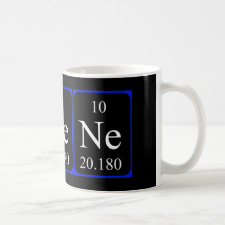
Authors: Ashkenani H, Taher MA, Mirrahimi F
Publication date: 2011
Article title: Synthesis of a New Ion Imprinted Polymer for Solid Phase Extraction and Preconcentration of Copper.
Alternative URL: http://icc2011.ir/Docs/D.pdf
Conference information: Abstracts, 15th Iranian Chemistry Congress
Abstract: Copper is an environmental pollutant, which has been tested and assessed over the past few years from both the toxicological and human health viewpoints [1]. Molecular imprinting technology has become a powerful method for high selectivity adsorption of target molecules. Ionic imprinted polymers find broad applications as preconcentration and separation matrixes for metal ions, such as Cu(II) [2]. In this study, A new Cu(II)-ion imprinted polymer (IIP) was prepared by formation of 1-(2-pyridylazo)-2- naphthol (PAN) complex in DMSO following polymerization with ethyleneglycoldimethacrylate (EGDMA), as crosslinking monomer; in the presence of benzoylperoxide (BPO), as initiator, via bulk polymerization method. The synthesis of IIP was carried out in two steps: 1. complex formation 2. polymerization. The complex of Cu(II) ion with PAN was prepared by stirring 0.25 mmol of copper(II) nitrate and 0.5 mmol of PAN (dissolved in 10 mL of DMSO). The formation and stoichiometry of complex was confirmed by UV–VIS absorption spectral studies. In order to prepare Cu (II) imprinted polymer, cross-linker (EGDMA) and initiator (benzoylperoxide) was mixed with previous solution and followed by purging with N2 gas for 10 min. The polymerization reaction was carried out in a water bath at 60 °C for 24 h. The synthesized polymer was ground in a mortar and dried. To remove templates, the remaining particles were treated with 5 mol L-1 of HCl for 1 h (several times). For preconcentration of Cu(II) ions, aqueous solution containing appropriate amount of Cu(II) was stirred with 100 mg imprinted polymer for 1 h at pH 5-8. Then, Cu(II)-ion imprinted polymer was separated from the adsorption media by centrifuge and then HCl solution was added to IIP as eluent and stirred. Imprinted polymer was separated and the concentration of Cu(II) ions in the desorption media was determined using AAS system. The effect of different parameters, such as pH, sample volume, adsorption and desorption time, type and least amount of the eluent were evaluated. Furthermore, the distribution ratio and selectivity coefficients of manganese and other selected ions were investigated
Template and target information: copper ion, Cu(II)



Join the Society for Molecular Imprinting

New items RSS feed
Sign-up for e-mail updates:
Choose between receiving an occasional newsletter or more frequent e-mail alerts.
Click here to go to the sign-up page.
Is your name elemental or peptidic? Enter your name and find out by clicking either of the buttons below!
Other products you may like:
 MIPdatabase
MIPdatabase









